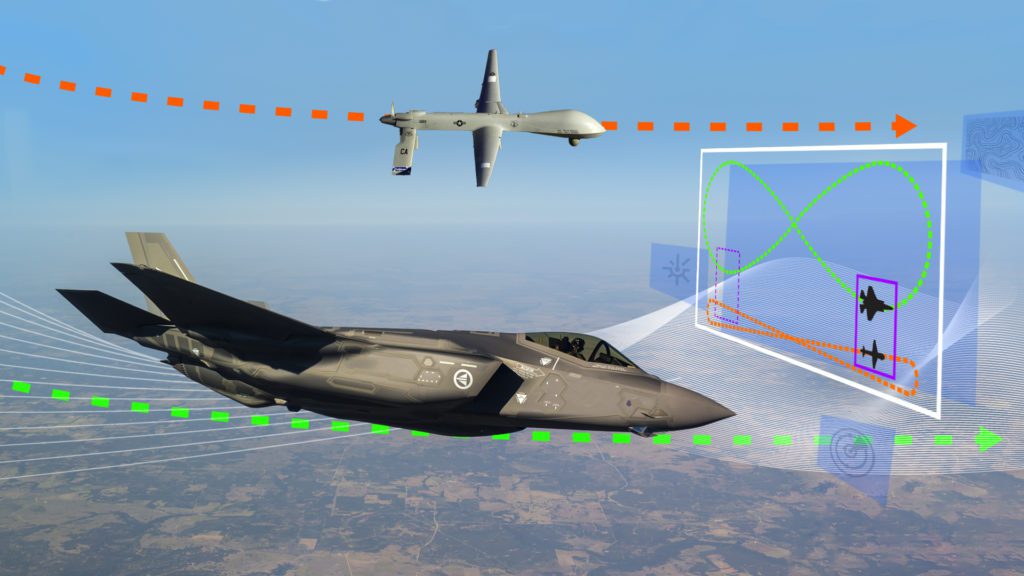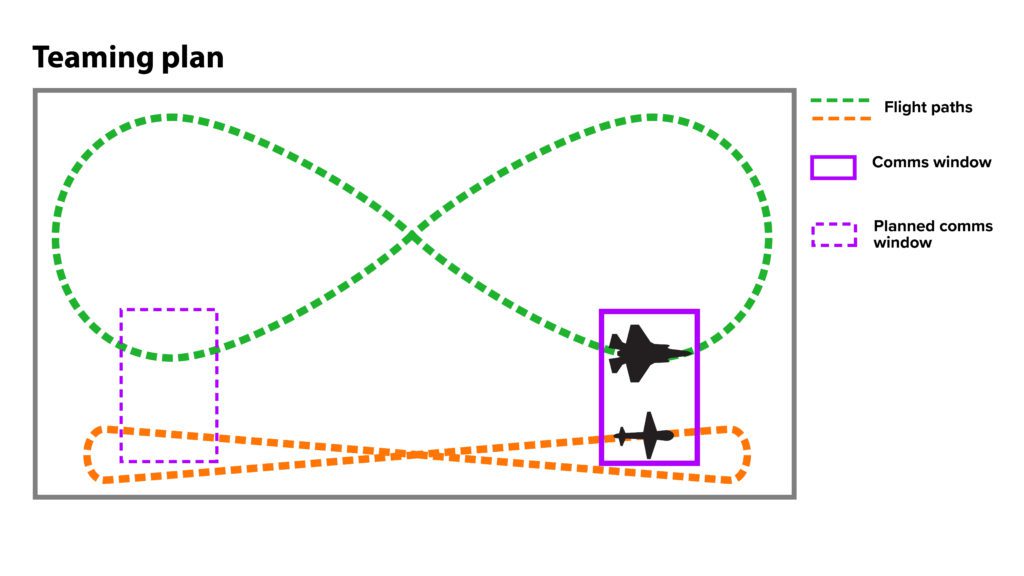TITAN
An enhanced communication prototype
for crewed–uncrewed teaming
An enhanced communication prototype for crewed–uncrewed teaming
Tactical Interfaces for Teaming with Autonomy (TITAN)
Charles River Analytics is developing advanced display tools that will help human operators effectively team with autonomous systems in challenging communication environments. TITAN is a multiphase endeavor that will develop and evaluate controls and support interfaces that help increase situation awareness during distributed tactical operations.

“Because these missions are conducted at the tactical edge, it’s critical to understand not only the situation but also the necessity of who needs to communicate with whom and how.”

Dr. Nicolette McGeorge
Senior Scientist and Principal Investigator on TITAN
While uncrewed systems are increasingly being deployed in tactical Air Force missions, human operators must still remain in the loop and are the final decision-makers. The challenges are numerous and complex: the environments are constantly changing, whether that is through weather patterns or congested traffic in the airspace; mission objectives can reset on the fly, such as when target priorities shift; and clear and consistent communication between all parties is not a given.
These complexities demand team situation awareness during times of high cognitive workload due to rapidly changing situations in real time, something operators might have difficulty maintaining. TITAN is designed to be an ally in such cases. By exploring complex communication and teaming scenarios, TITAN delivers contextual information to operators in a format that can be quickly and readily understood.
Dr. Nicolette McGeorge, Senior Scientist at Charles River, is the Principal Investigator on the TITAN effort. Phase I, executed with Dr. Michael Rayo at Ohio State University, laid the groundwork using cognitive systems engineering (CSE) methods. The philosophy of CSE is to understand complex situations and identify cognitive needs that should be considered in the design of visualizations to support those situations. This, combined with the tactical knowledge of collaborators at Phoenix Flight Test, Inc. (including Lt. Col. Leonard “Sherman” Kearl, USAF Ret., President), resulted in a series of detailed operational scenarios used to elicit requirements for visualizations that support these complex teaming environments.


Abstraction networks, a method in CSE, help create an artifact of the requirements for each scenario. The team injected complicating factors into the scenarios to further enable identification of requirements under complex teaming situations.
Examples of complicating factors within the scenarios included the following:
- Data overload: When a pilot receives a flood of information at the same time that they must sift through and interpret effectively to quickly gain situation awareness.
- Misleading indicators: When information from a source might not accurately reflect the real-world conditions.
- Distributed information: When data from a variety of systems needs to be synchronized to deliver a single source of truth.
- Ambiguous cues: When operators receive information from their team but its meaning is not immediately clear. In such cases, Dr. McGeorge explains, “you have to wait and see and gather more information before you can figure out what’s really going on, or you might need to make a guess based on the time pressures involved.”
Now in Phase II, the team will broaden the operational scenarios to encompass a larger range of crewed and uncrewed systems operations and enhance the TITAN prototype to support more vigorous testing and integration with representative frameworks.
As automation and artificial intelligence are more widely adopted, the possibilities for more uncrewed vehicle teammates are increasing. Dr. McGeorge explains, “It’s important to understand the different types of capabilities that could exist, different teaming structures and mission scenarios, and how these all will affect future crewed and uncrewed teaming.”
Contact us to learn more about TITAN and our capabilities in user interfaces and human-machine teaming, and robotics and autonomy.
This material is based upon work supported by the United States Air Force under Contract No. FA8650 22 C 6453. Any opinions, findings and conclusions or recommendations expressed in this material are those of the authors and do not necessarily reflect the views of the United States Air Force.
